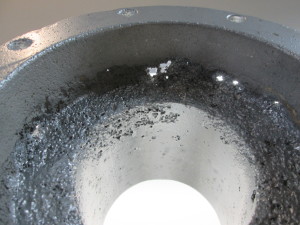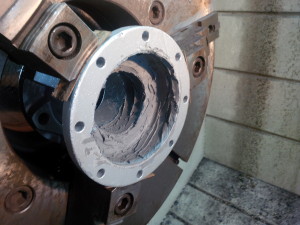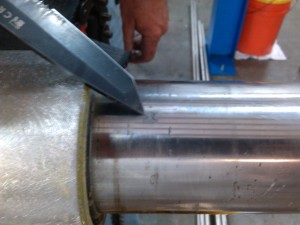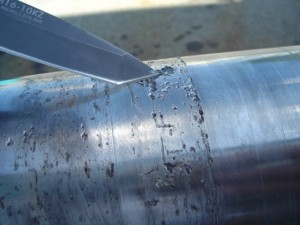While working on a Quantum Stabilizing system on a ABS Class 154 foot Richmond, we found that the stabilizer shafts had significant crevice corrosion where the lower lip seal rides. The lip seals on a hydraulic shaft or rod need a smooth surface or the sea water will leak in causing a failure of the bearings. The model of Quantum Stabilizer system used on this vessel was a Zero Speed ™ known for its ability to stabilize a vessel underway or at anchor.
We were able to repair one of the shafts by cladding over the area where the corrosion occurred. Cladding or shaft weld-over, is the process of repairing a worn or damaged area on a shaft. This type of work is done by our on-site machine shop, Straight Line Marine, which is the only shop in Florida that is ABS approved to perform this work on this class of boat.
However, the other shaft had corrosion that ran too deep so it was condemned and a replacement shaft was ordered.
Once the cladding process was complete and the replacement shaft received, we were able to re-install the stabilizer back in the vessel helping to ensure a smooth and comfortable journey for all aboard.










